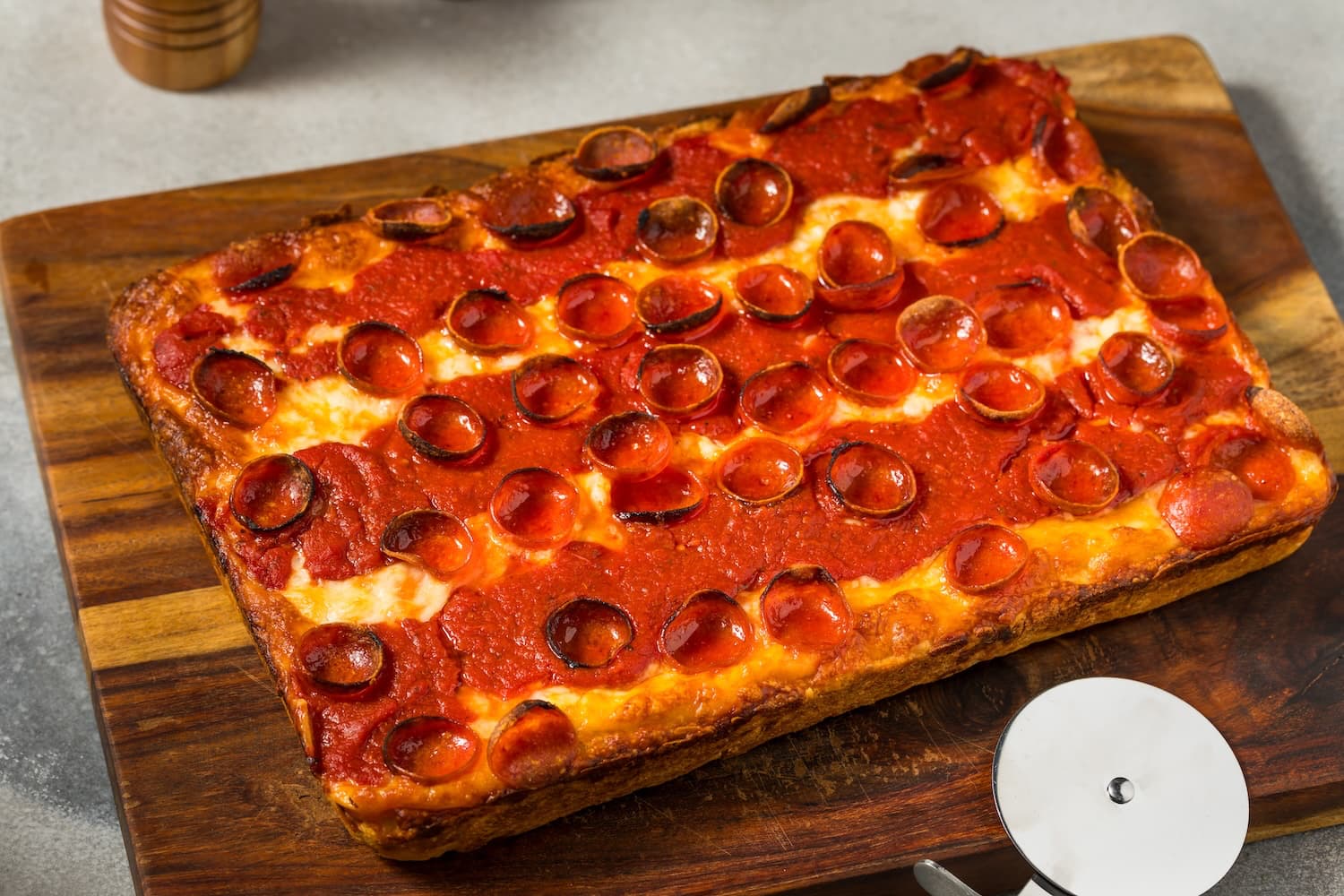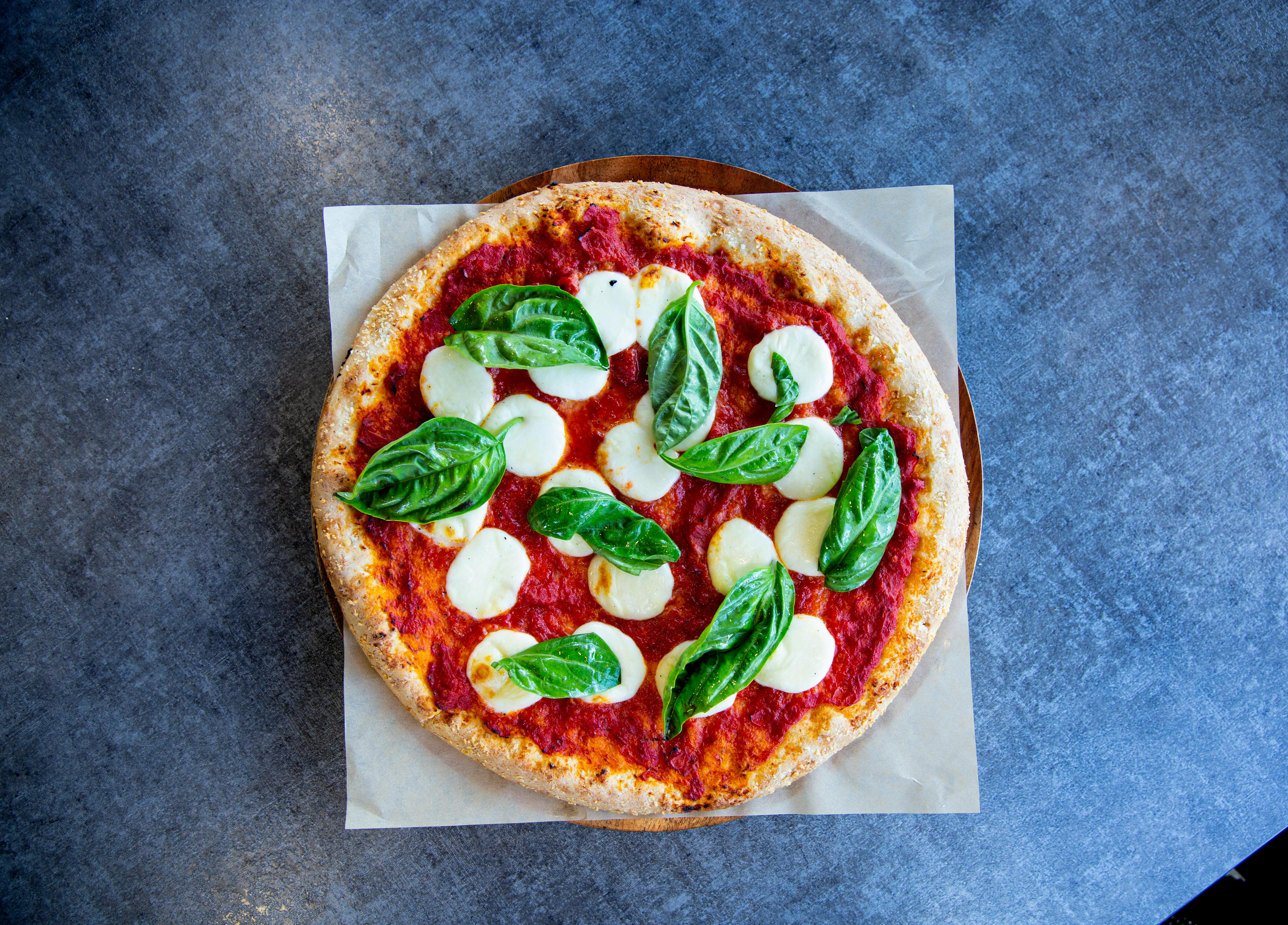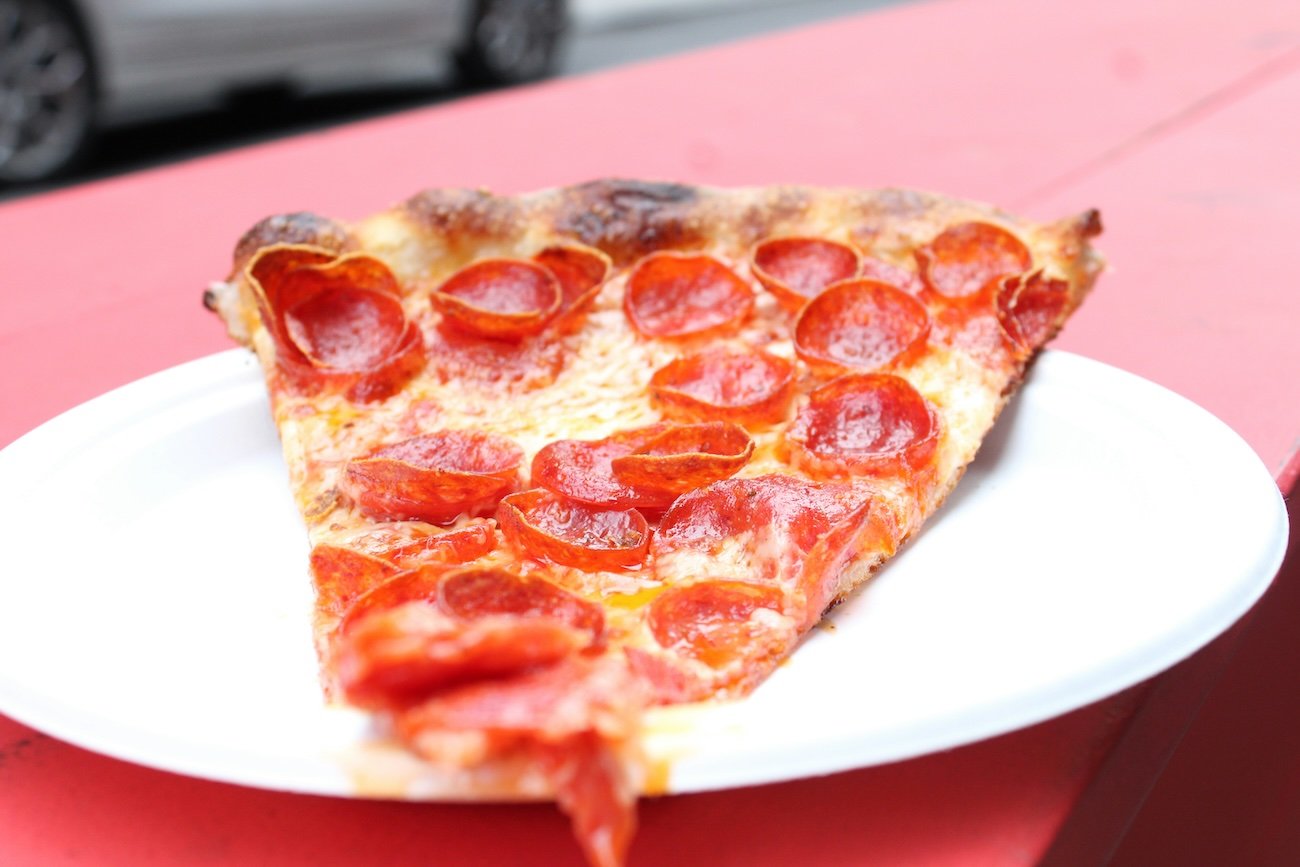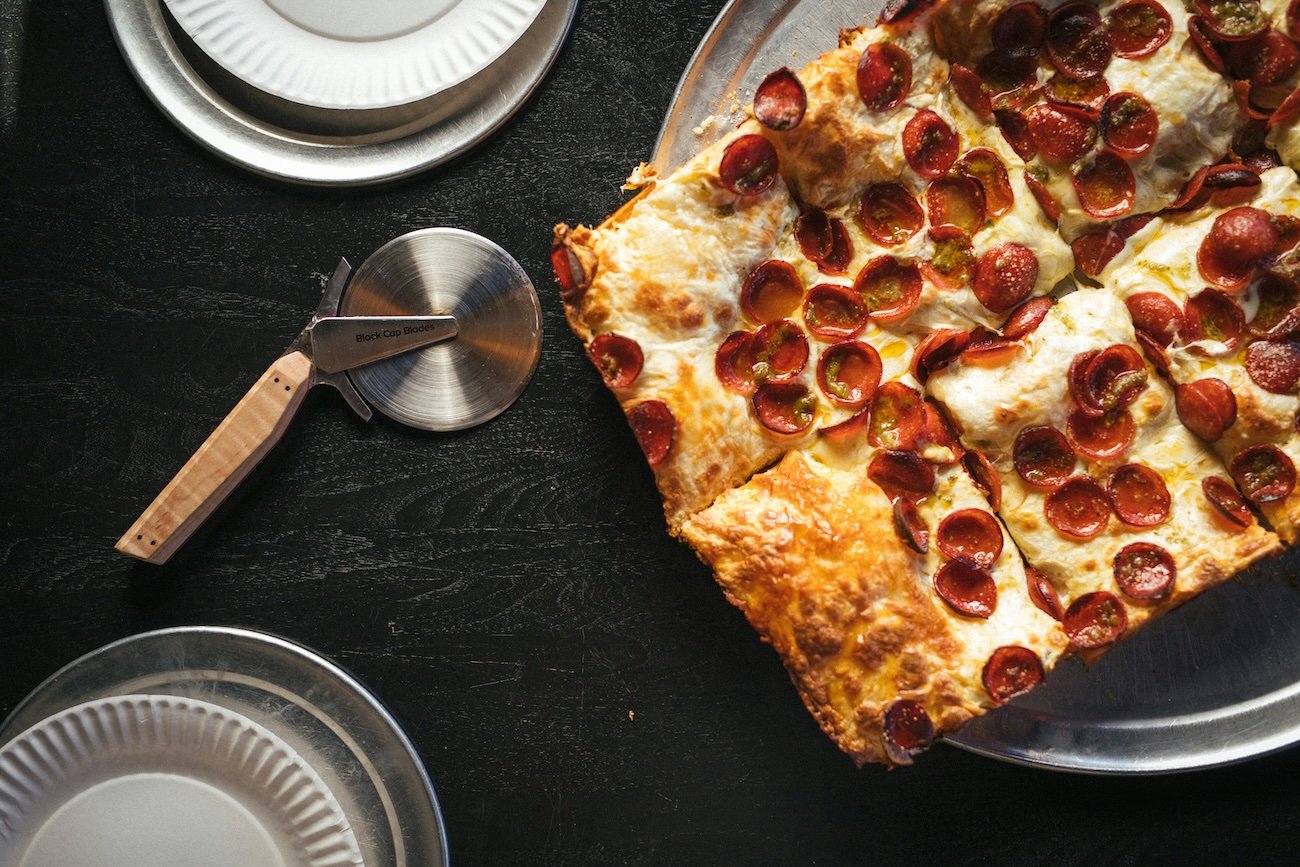Detroit Style Pizza: The Motor City's Gift to the World
Detroit-style pizza is more than just a regional variation—it's a culinary innovation that represents the spirit of American ingenuity and the rich industrial heritage of Detroit itself. Born in the 1940s at Buddy's Rendezvous (now Buddy's Pizza) in Detroit, Michigan, this distinctive style has evolved from a local favorite into a nationally celebrated pizza phenomenon that continues to inspire pizza makers and enthusiasts around the world.
What makes Detroit-style pizza truly special is its unique combination of thick, airy crust, caramelized cheese edges, and reverse topping order. It's a style that embraces both tradition and innovation, creating a pizza experience that's unlike any other—a perfect blend of Sicilian heritage and American creativity that has captured the hearts of pizza lovers everywhere.
The Anatomy of Detroit Style Pizza: Understanding the Magic
Detroit-style pizza is defined by several key characteristics that work together to create its distinctive appearance and flavor:
- The Crust: Detroit-style pizza features a thick, square crust that's light and airy rather than dense and heavy. The dough is typically made with high-gluten flour and has a moderate hydration level (around 65-70%) that creates the perfect balance of structure and tenderness. The crust should be crispy on the bottom and edges while remaining soft and chewy in the center.
- The Pan: Authentic Detroit-style pizza is baked in blue steel pans, originally used in the automotive industry for holding small parts. These pans conduct heat evenly and create the characteristic crispy bottom and caramelized edges that define the style. The pans are generously oiled before the dough is added, ensuring the perfect golden-brown crust.
- The Cheese Edge: Perhaps the most distinctive feature of Detroit-style pizza is the caramelized cheese edge. Wisconsin brick cheese (or a blend of cheeses) is applied all the way to the edges of the pan, where it melts and caramelizes during baking, creating a crispy, flavorful border that's often considered the best part of the pizza.
- The Reverse Order: Unlike traditional pizza, Detroit-style uses a reverse topping order: cheese goes on first, directly on the dough, followed by toppings, and finally sauce applied in stripes on top. This method ensures the cheese melts properly and creates the signature caramelized edges.
The Cheese Factor: Wisconsin Brick Cheese and Beyond
Cheese selection is crucial for authentic Detroit-style pizza, with Wisconsin brick cheese being the traditional choice:
- Wisconsin Brick Cheese: This semi-soft cheese, similar to Muenster, has excellent melting properties and creates the perfect caramelized edges. It has a mild, slightly tangy flavor that complements the other ingredients without overwhelming them.
- Cheese Blends: Many modern Detroit-style pizzerias use a blend of cheeses, combining Wisconsin brick cheese with mozzarella, Monterey Jack, or other melting cheeses. This creates a more complex flavor profile while maintaining the essential melting and caramelizing properties.
- Application Technique: The cheese is applied generously, covering the entire surface of the dough and extending all the way to the edges of the pan. This ensures that every bite includes some of the caramelized cheese edge.
The Evolution of Detroit Style: From Local Favorite to National Phenomenon
Detroit-style pizza has undergone a remarkable evolution from its humble beginnings to its current status as a celebrated pizza style:
- The Early Years (1940s-1960s): Created at Buddy's Rendezvous, the original Detroit-style pizza was a simple, hearty meal designed to feed hungry workers. The thick crust and generous toppings made it filling and satisfying.
- Local Expansion (1970s-1990s): As Detroit's pizza culture grew, more pizzerias began offering Detroit-style pizza, each adding their own variations while maintaining the essential characteristics of the style.
- National Recognition (2000s-Present): Detroit-style pizza has gained national and international recognition, with pizzerias across the country and around the world offering their own interpretations of this distinctive style.
Mastering Detroit Style: Techniques and Tips
Creating authentic Detroit-style pizza requires understanding both the science and art of thick-crust pizza making:
- Dough Development: The dough should be mixed to develop good gluten structure, then given a long, slow fermentation (12-24 hours) to develop flavor and texture. The dough should be sticky but manageable, with good extensibility.
- Pan Preparation: Generously oil your blue steel pan with olive oil or a blend of olive oil and butter. The oil should coat the bottom and sides completely, ensuring the dough doesn't stick and creating the characteristic crispy bottom.
- Shaping Technique: Gently press the dough into the oiled pan, being careful not to deflate the air bubbles that are essential for the light texture. Let the dough rest in the pan for 30-60 minutes before adding toppings.
- Topping Application: Apply cheese first, covering the entire surface and extending to the edges. Add toppings sparingly, then apply sauce in stripes on top. This reverse order ensures proper melting and caramelization.
- Baking Method: Bake at high temperature (500-550°F/260-290°C) for 12-15 minutes, or until the cheese is golden brown and the edges are caramelized. The pizza should be removed from the pan immediately after baking to prevent the bottom from becoming soggy.
The Perfect Detroit Slice: What to Look For
A properly made Detroit-style pizza should exhibit several key characteristics:
- Visual Appeal: The pizza should have a golden-brown crust with caramelized cheese edges that are slightly darker and more crispy than the center. The sauce should be applied in stripes, creating a visually appealing pattern.
- Texture: The crust should be crispy on the bottom and edges, with a light, airy interior that's not dense or heavy. The cheese should be melted and slightly caramelized, with the edges being the most flavorful part.
- Flavor Balance: The cheese should be the dominant flavor, with the sauce providing acidity and the toppings adding complexity without overwhelming the base flavors.
Regional Variations: The Diversity of Detroit Style
While Detroit-style pizza has a defined set of characteristics, different pizzerias and regions have developed their own variations:
- Traditional Detroit: The classic style with Wisconsin brick cheese, simple toppings, and sauce applied in stripes.
- Modern Interpretations: Contemporary versions often feature more elaborate toppings, different cheese blends, and creative sauce applications while maintaining the essential thick crust and caramelized edges.
- International Adaptations: Detroit-style pizza has been adapted in different countries, with local ingredients and flavors being incorporated while maintaining the basic structure and technique.
The Detroit Style Experience: Beyond the Pizza
Eating Detroit-style pizza is about more than just the food—it's about experiencing a piece of American culinary history:
- Social Dining: Detroit-style pizza is meant to be shared, cut into squares and served family-style. This communal aspect reflects the working-class origins of the style.
- Beer Pairing: Detroit-style pizza pairs beautifully with craft beers, particularly IPAs and lagers that can stand up to the rich, cheesy flavors.
- Cultural Connection: The style represents the innovation and resilience of Detroit, a city that has reinvented itself while maintaining its unique character and traditions.
The Future of Detroit Style: Innovation and Tradition
Detroit-style pizza continues to evolve while maintaining its essential character:
- Artisanal Approaches: Some pizzerias are taking a more artisanal approach, using high-quality ingredients and traditional techniques to create elevated versions of the classic style.
- Creative Variations: Chefs are experimenting with new toppings, sauces, and techniques while respecting the fundamental characteristics that make Detroit-style pizza special.
- Global Influence: Detroit-style pizza is influencing pizza makers around the world, who are adapting the techniques and characteristics to their own local traditions and ingredients.
The Art of Detroit Style: A Culinary Legacy
Making Detroit-style pizza is about honoring a culinary tradition that represents the best of American innovation and creativity. It's about understanding the balance between the thick, airy crust and the rich, caramelized cheese, about respecting the techniques that have been perfected over decades, and about celebrating the spirit of Detroit itself.
Whether you're making traditional Detroit-style pizza with Wisconsin brick cheese or experimenting with modern variations, the key is to honor the spirit of the original: hearty, flavorful, and made with attention to detail and respect for tradition. The result will be a pizza that's not just delicious, but a true celebration of American culinary ingenuity and the enduring spirit of the Motor City.




